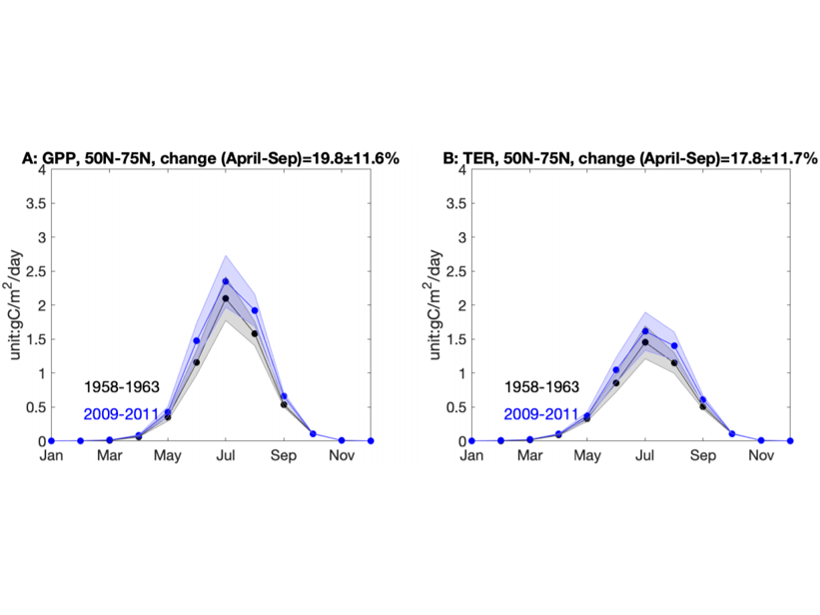Source: AGU Advances
Atmospheric CO2 rises and falls with the northern hemisphere winter and summer, respectively, and the amplitude of that seasonality is increasing. Is the vast boreal forest contributing to this trend, and, if so, why? Most models assume that increased CO2 stimulates photosynthesis, increased temperature stimulates respiration, and the difference between the two determines net ecosystem exchange (NEE) of carbon. Inferring photosynthesis and NEE from satellite data, Liu et al. [2020] find that 75% of the spatial variations in photosynthesis across the region were explained by growing season mean temperature. Modeling this response indicated that increased temperatures from 1960 to 2010 coincided with a 20% increase in the seasonal amplitude of photosynthesis and NEE. These results are important because, while future CO2 fertilization may have diminishing effects, a positive response to temperature implies continued expansion of high-latitude forests and their productivity. More work is needed to investigate whether respiration could overtake photosynthesis responses to temperature and whether nitrogen availability could limit responses.
Citation: Liu, J., Wennberg, P., Parazoo, N., Yin, Y., & Frankenberg, C. [2020]. Observational constraints on the response of high-latitude northern forests to warming. AGU Advances, 1, e2020AV000228. https://doi.org/10.1029/2020AV000228
—Eric A. Davidson, Editor, AGU Advances
Text © 2020. The authors. CC BY-NC-ND 3.0
Except where otherwise noted, images are subject to copyright. Any reuse without express permission from the copyright owner is prohibited.

